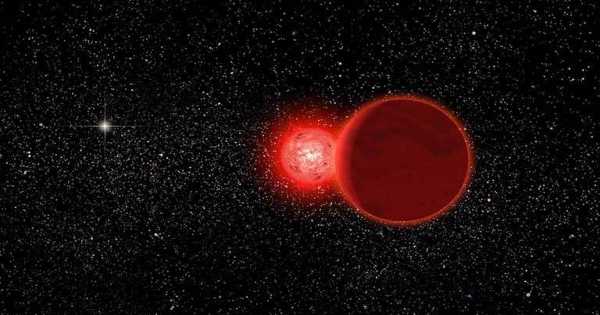Gliese 849 is a tiny, single star in the Aquarius equatorial constellation. This star is located in the north-central portion of the constellation Aquarius, around 28.6 light-years from our Sun, Sol. With an apparent visual magnitude of 10.41, it has a reddish tint and is invisible to the human eye. It is much dimmer and smaller than Sol and is not visible to the naked eye from the Earth’s surface.
Gliese 849 is a red dwarf star with the spectral type M3.5V. Based on parallax, the distance to this star is 28.7 light-years, yet it is moving closer to the Sun with a radial velocity of – 15.3 km/s. It has detected the first planet orbiting a red dwarf with a semi-major axis bigger than 0.21 AU. It is accompanied by two recognized gas giants. This system has a number of known exoplanets.
GJ 849’s stellar classification is M3.5V, indicating that it is a tiny red dwarf star that generates energy by hydrogen fusion in its core area. It is a solitary star of the spectral type M3.5 V with 36% of the solar mass. Several investigations have discovered super-solar abundances in spectra, showing that the elemental abundances of higher mass elements are much higher than in the Sun. The star is almost half the mass and size of the Sun and spins slowly, with a revolution period of around 39 days. The star is thought to be more than three billion years old. At an effective temperature of 3,601 K, it radiates only 2.8 percent of the Sun’s brightness from its photosphere.

Planetary system
Gliese 849 b is an extrasolar planet located in the constellation Aquarius, approximately 29 light-years distant. It is the first long-period Jupiter-like planet identified near a red dwarf, and it was announced in August 2006 by the California and Carnegie Planet Search teams using the radial velocity approach. Gliese 876 b was previously the longest-period Jupiter-like planet orbiting a red dwarf.
In late 2006, a long-period Jupiter-like exoplanet was discovered orbiting the red dwarf with a period of slightly over 5 years. There was also a linear trend in the radial velocities, indicating the presence of a longer period partner. In 2013, the trend in radial velocities was verified. In 2015, the orbit of the second exoplanet was finally determined. It is the first planet discovered orbiting a red dwarf with a semi-major axis greater than 0.21 AU.
















